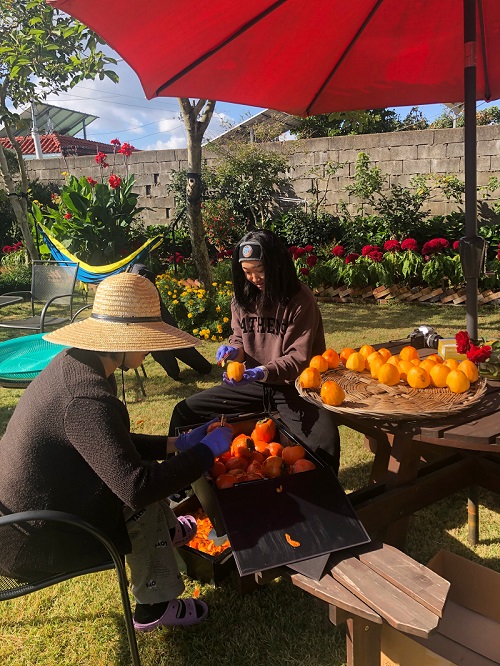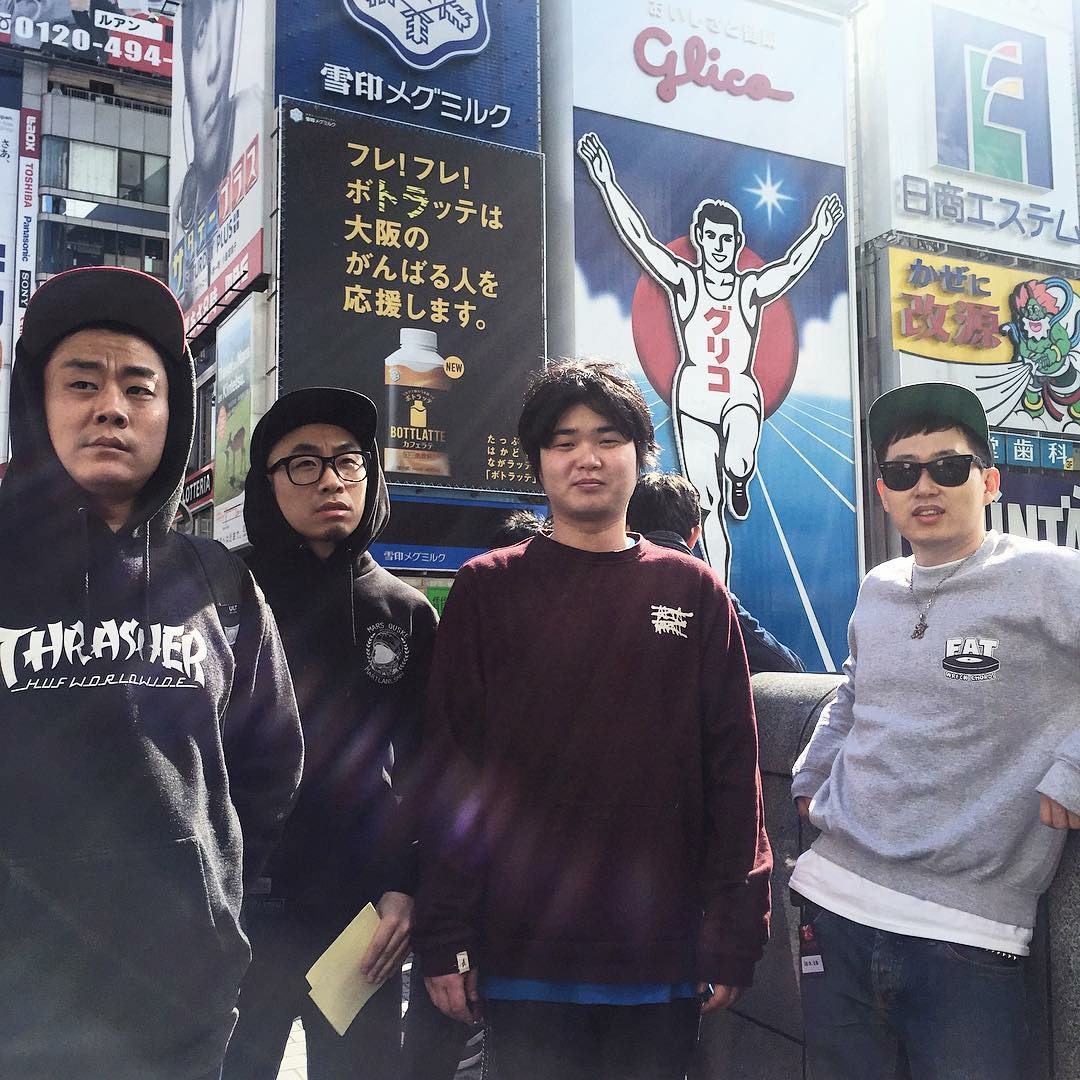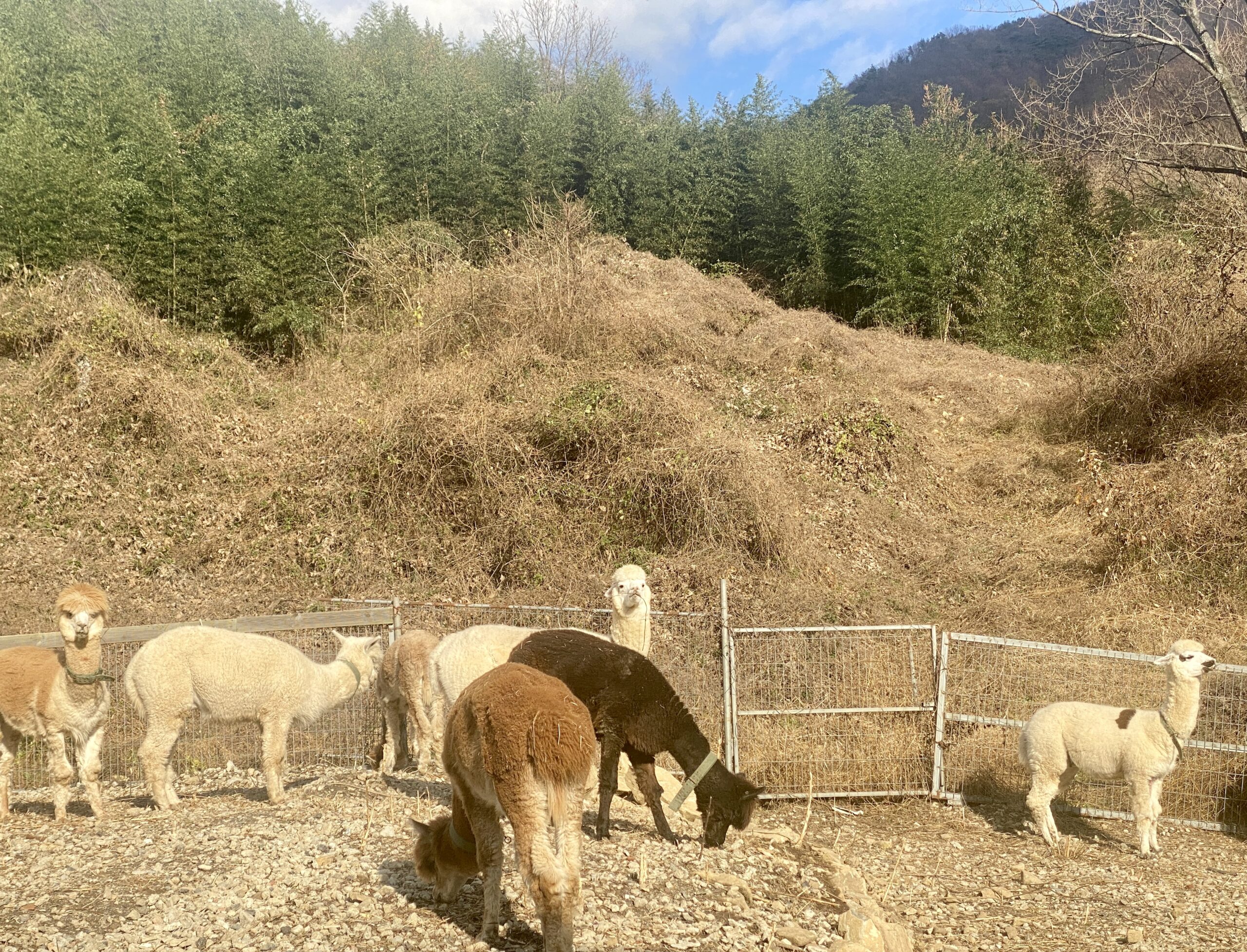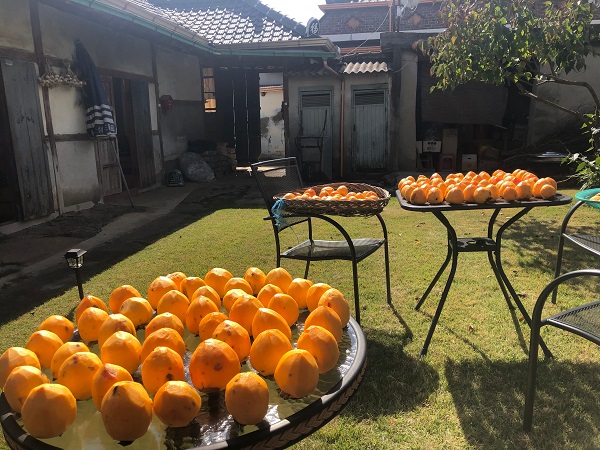The Legendary and Powerful Gotgam: How to Make Dried Persimmons
By Grace Chun
Around the time of Chuseok (추석), my maternal grandmother always retells the story of the tiger and the dried persimmons, or gotgam (곶감). My grandmother’s version of the folktale goes like this: Long ago, a tiger approached a village in search of food. The tiger heard a child incessantly crying. The mother tried to console the child by offering anything and everything but to no avail. Switching tactics, the mother warned that if the child kept crying, a tiger would come and take the child away. The child did not bat an eye and kept on crying. At her wits end, the mother offered the child gotgam and the child instantly stopped crying. The tiger, alarmed, fled the village, thinking what could this gotgam be that the child feared more than a tiger!
Of course, gotgam is nothing to fear but a deliciously sweet fall and winter treat. Last October, my parents taught me how to make gotgam from start to finish. When I grew up in the United States, I never remembered eating gotgam. I definitely enjoyed sweet persimmons, or dangam (단감), during the fall and winter, but we could only find it in the Asian or Korean grocery stores. I was eager to learn how to make this sweet treat.
Before it becomes gotgam, it is first just a persimmon, or gam (감). My family grows two types of persimmon trees. One type is sweet persimmon (dangam), light orange and shaped like miniature pumpkins. They are firm. The other kind is daebong (대봉), persimmons that are bright orange, more elongated, spherical, and have fewer ridges. The latter are the ones used to make gotgam.
If you let daebong ripen, their opaque orange skin darkens to a more orange-red color and becomes a little more translucent. At this stage, the persimmon is called hongsi (홍시). You can eat it as is. Hongsi is soft and very sweet. My family likes to freeze hongsi and eat it like sherbet.
To make gotgam, my parents instructed me to try to harvest the daebong before they become hongsi. To get ready to harvest from relatively short persimmon trees, I gathered a step stool, clippers, baskets, and a good playlist. Sometimes I used clippers or just plucked the daebong with my hands. Some of our trees I could climb, so I climbed away and picked the daebong. A few of our trees are quite tall, so my dad made a contraption with a long bamboo stick configured with a two-liter water bottle with a cut-out hole on the side to pick the daebong way out of our reach. The contraption works wonders and also provides an intense arm workout.
After we picked plenty of daebong, we took them back to our house. We washed them of any bugs and debris, and then we began to peel. All the skin needs to be peeled while you keep the leaf where the stem typically is as is. Then you set the persimmon upside down to dry in the sun. I initially thought that bugs would be attracted to the persimmons due to their sweetness, but my mom informed me that the outer layer dries and forms a protective coating that keeps the persimmon from being eaten by such creatures.

It is common to hang-dry these persimmons, but we had so many that we dried them on tables in our yard. Some people use dehydrators, but our family dried our persimmons out in the sun. The weather is a critical component to making gotgam in this way. It is best to dry them when it is a breezy, sunny day.
My family chooses the bangeonsi (반건시) method. This method dries the persimmons halfway instead of fully. This leaves some moisture and keeps them chewy and not so hard. As the persimmon dries, it darkens in color and forms a white powdery coating. Once they are done drying, you can enjoy the gotgam right away or freeze them to enjoy throughout the year.
It has made for great gifts for friends and family, as they are organic and made the old-fashioned way. I also love hearing all the different versions of the tiger and persimmon folktale whenever I give away the gotgam.
This fall, I hope you will eat and enjoy plenty of persimmons and gotgam, the legendary and powerful dried fruit feared even by the tiger.
The Author
Grace Chun (전유리) has lived in Gwangju since 2022. She enjoys farming with her dad, taking film photos, dabbling in coding, and running. Instagram: @gyc_photo





